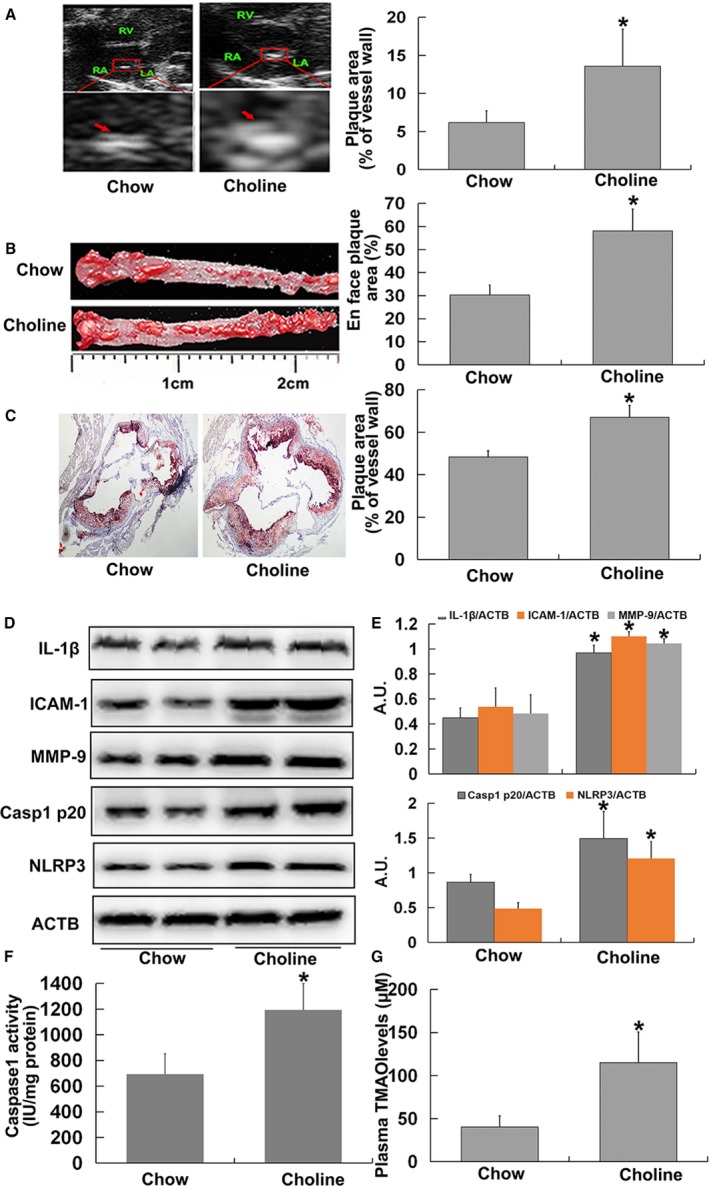Figure 6.

Trimethylamine‐N‐oxide (TMAO) induced vascular inflammation via nucleotide‐binding oligomerization domain–like receptor family pyrin domain–containing 3 (NLRP3) inflammasome activation in vivo. Eight‐week‐old female ApoE−/− mice (n=10 per group) were fed chow diet or chow diet combined with choline (1%) for 4 months. Mice were killed, and their blood and aorta samples were collected immediately, snap‐frozen in liquid nitrogen, and stored at −80°C until required. A, Ultrasound B‐mode images of aortic sinus and quantification. Arrows indicate the regions of interest. B, Oil‐red O staining of whole aortas, including aortic arch and thoracic and abdominal regions, and their quantitation. C, Oil‐red O–stained aortic root (counterstained with hematoxylin) and quantification. D, Western blot analysis of caspase‐1 p20, NLRP3, IL‐1β, ICAM‐1, and MMP‐9 contents in aortas. E, Bar graphs showing quantification of the indicated proteins. F, Caspase‐1 activity in aortas. G, Measurement of plasma TMAO levels using liquid chromatography–tandem mass spectrometry. Values are expressed as means±SE (n=10). *P<0.01 vs vehicle‐treated control group; AU, arbitrary units; ICAM, intercellular adhesion molecule; IL, interleukin; MMP, matrix metallopeptidase.
